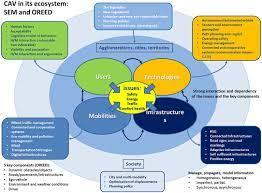Autonomous vehicles (AVs) have the potential to revolutionize transportation systems and society in a number of ways. Some of the potential benefits of AVs include:
- Reduced traffic congestion: AVs can communicate with each other and with traffic infrastructure to coordinate their movements, which can help to reduce traffic congestion.
- Improved safety: AVs are not susceptible to human error, which can lead to a significant reduction in traffic accidents.

- Increased mobility: AVs can provide transportation to people who are unable to drive, such as the elderly and people with disabilities.
- Reduced environmental impact: AVs can be powered by electricity or other renewable energy sources, which can help to reduce greenhouse gas emissions.
However, there are also some potential challenges associated with AVs, including:
- High cost: AVs are still in their early stages of development, and they are likely to be expensive for the foreseeable future.
- Public acceptance: Some people may be reluctant to trust their safety to an autonomous vehicle.
- Legal and regulatory challenges: There are a number of legal and regulatory challenges that need to be addressed before AVs can be deployed on a large scale.
Despite the challenges, the potential benefits of AVs are significant. If AVs can be successfully developed and deployed, they have the potential to make transportation systems safer, more efficient, and more accessible.
Here are some of the specific ways in which AVs could impact transportation systems and society:
- Reduced traffic congestion: AVs could reduce traffic congestion by coordinating their movements and avoiding accidents. This could lead to shorter travel times and reduced fuel consumption.
- Improved safety: AVs could improve safety by eliminating human error, which is a major factor in traffic accidents. AVs could also be equipped with sensors and software that can detect and avoid hazards.
- Increased mobility: AVs could increase mobility by providing transportation to people who are unable to drive, such as the elderly and people with disabilities. AVs could also be used to provide transportation to people in rural areas or areas with limited public transportation.
- Reduced environmental impact: AVs could reduce environmental impact by being powered by electricity or other renewable energy sources. AVs could also be more fuel-efficient than traditional vehicles.
Overall, AVs have the potential to make transportation systems safer, more efficient, and more accessible. However, there are a number of challenges that need to be addressed before AVs can be deployed on a large scale. These challenges include the high cost of AVs, public acceptance, and legal and regulatory issues.